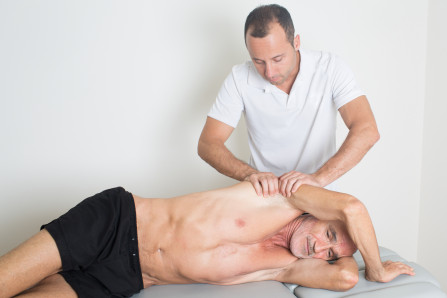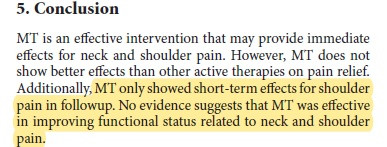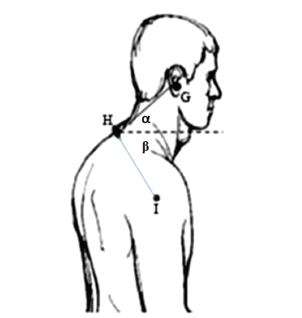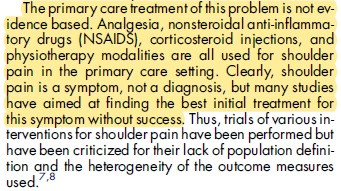Your complete guide to (myofascial) trigger points
Trigger points are those tender lumps in muscles that therapists find. This article covers what they are, what they do, and how they are... Read Article

Should you get a massage for shoulder pain? According to the results of 20 clinical trials and other scientific papers general massages only give short term relief at best, but a specific type of massage gave excellent results.
It is also clear that to get good results there are other things that need to be considered as well. In this article we will share with you which are the effective massages, and what else you need to look at.
Which massages are the most effective
What else you need to look at
Practical advice and guides
In this section

A review of the 12 available clinical trials of massage for shoulder pain found that general massages only gave short term relief and no improvement in function (1).
Specific massage techniques that target (myofascial) trigger points, or trigger points for short, gave much better results (2–4). These are those tender lumps that therapists find. We will give advice on these therapies in our specific advice section below.
If you have shoulder pain there are two things you need to look at in addition to getting a massage. These are:
Extensive scientific evidence shows that the following two issues are major causes of shoulder pain, and correcting them has proved to be a big help. However, because of the influence of pharmaceutical companies these are too often overlooked by doctors, which of course means that the problem does not get better. For more information on both of these please see our guide Why shoulder pain keeps coming back and what you can do about it .

Many scientific trials have shown that having a head forward posture as pictured is a major cause of shoulder pain (5–11). This causes abnormal stress on the shoulder muscles and joint, while correcting this issue gives improvement.
We have mentioned that treating trigger points is very effective. In a series of trials, highly credentialed scientists have found that they are are a major cause of shoulder pain, and that treating them gives excellent relief (2–4,12–15). However, as discussed above this is usually not mentioned in medical journals (16–18) hence your doctor probably will not know about it.
As discussed above, because of drug company influence the major causes are usually not mentioned in medical journals. Instead medical journals tell doctors to use therapies that are unproven, do not work, and can even hurt you. Needless to say if something is not doing you any good and even hurting you it is best to stop.

According to an article in The Journal of Shoulder and Elbow Surgery (19) 79% of shoulder pain suffers are still suffering after six months, and there is no evidence to support the use of most medically recommended treatments such as analgesics, NSAIDS (anti-inflammatory drugs), corticosteroids and physiotherapy.
While exercises are commonly prescribed, these alone do not help and in one trial one trial of 148 patients a home exercise program actually made the shoulder pain worse (20). For more information please see our guide Do exercises help shoulder pain .
If you have shoulder pain, in this section we will give you our best possible guidance. Because we are not aware of your specific circumstances though please consider it as general advice to be discussed with your health care professional.
In this section:
As we have seen general massages are of little help, while those that target trigger points while those that target trigger points are effective. We have also see that trigger points are a major overlooked cause of shoulder pain. Please see out guide Massage and trigger point therapy for shoulder pain . It gives a full list of muscles involved and instructions on how to perform the therapy.
A key issue with trigger points is that single treatments of courses of treatments can give relief, but eliminating the problem takes a longer course of treatments. Because of this the guide gives easy to do effective self treatments.
If you have a head and shoulder forward posture as shown above it will continue to cause abnormal stress on your shoulder joint and muscles. This cannot usually be corrected by taping, exercises or a conscious effort to stand straight. For details on how this is dealt with please see our guide What are misaligned vertevrae .
The key issue with exercises is that problems (eg. the head and shoulders forward posture) cause shoulder joints to work abnormally. Exercises cannot correct this function as long as the causative problem remains. The correct way is to first correct the cause of the incorrect function to allow the joint to work normally, then if necessary use exercises to help rehabilitation. Some professionals such as the US National Academy of Sports Medicine (21) recognise and advise this, but too many doctors and physios do not. For more info please see our guide Do exercises help shoulder pain .
Because of prescribing regulations we cannot advise people to stop taking medications, but we can advise that as discussed above most medical treatments for shoulder pain are un-proven, do not work, and can do harm.
We are continually adding more information on research and uses. Subscribe below to have us email them to you "hot off the press".

Several years ago Dr Graeme, a Chiropractor practicing in Victoria, Australia was looking for a serious hand held massager his patients could use at home to get the extra quality massage they needed. The ones he found in the shops and on-line for home use looked nice but were not serious, and... read more
Trigger points are those tender lumps in muscles that therapists find. This article covers what they are, what they do, and how they are... Read Article
Massage is good for shoulder pain, however the relief you get will vary considerably depending on the type of massage. According to... Read Article
Most professional athletes and sports clubs make heavy use of massage type treatments. The ability to do self massage using a hand held... Read Article
If you’ve got tennis elbow you’ve probably been told that it is inflamed due to overuse, and that it can take a lot of therapy and 6-12... Read Article
Massage is good for shoulder pain, however the relief you get will vary considerably depending on the type of massage. According to... Read Article
Cellulite is a very common problem which can be unsightly and have unpleasant symptoms. Common treatments include lasers, needles,... Read Article
There are many possible causes of muscle fatigue, but by far the most common cause of muscle fatigue, but the most common and probably... Read Article
In the one clinical trial that directly compared massage and anti-inflammatory drugs (NSAIDS) for back pain massage gave the far superior... Read Article
Massage guns are heavily marketed as a substitute for professional therapists, providing benefits such as sports recovery and pain... Read Article
Do not refresh or leave this page until loading complete.